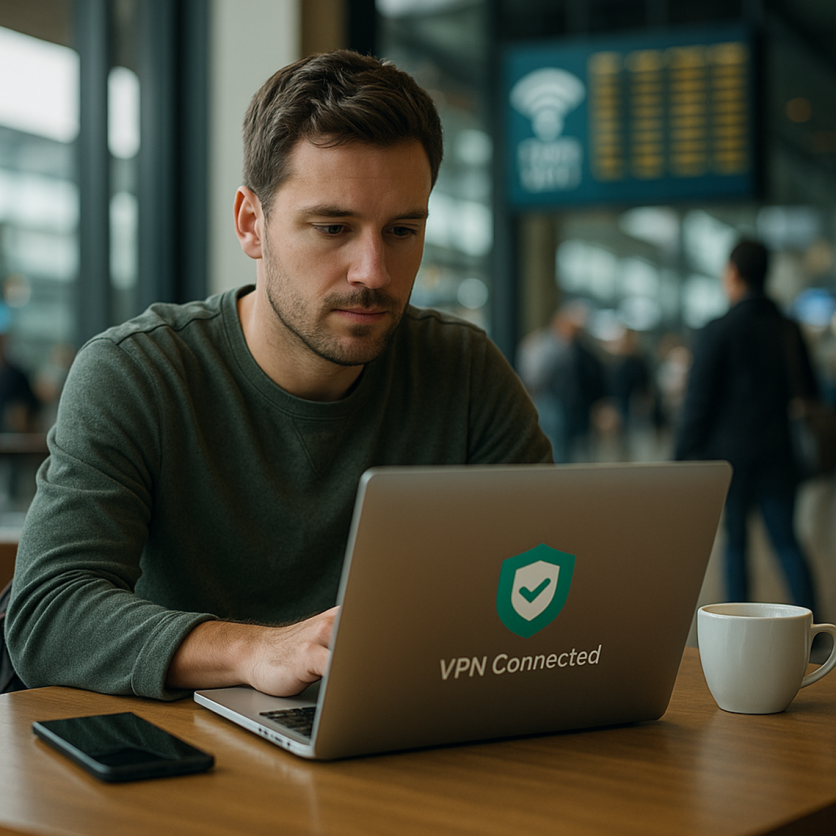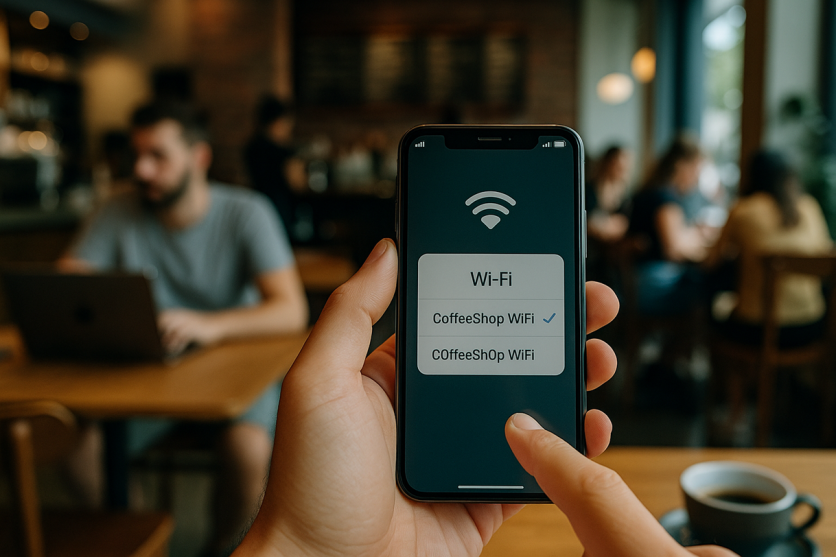Your flight is delayed, your phone's data plan is nearly maxed out, and that glowing "FREE AIRPORT WIFI" sign looks like salvation. Most of us have been there. Public Wi-Fi is a lifeline for travelers, freelancers, and students—but it's also one of the easiest ways for attackers to intercept your data. In 2023, U.S. agencies like the Federal Trade Commission and CISA renewed their warnings about unsecured hotspots and reminded people to take precautions on open networks.

This isn't a "don't ever use Wi-Fi" scare piece. Instead, let's look at how attacks actually happen and how you can protect yourself with a mix of good habits and modern tools.
Why Public Wi-Fi Is Riskier Than You Think
Evil twin hotspots. Attackers can clone the name of a legitimate network (say, "Airport Free WiFi") and run a fake access point. If you connect, everything you send travels through their hardware first.
Traffic sniffing. Even on a genuine network, if a site or app doesn't use encryption correctly, a snooper on the same network can see unprotected data. This is exactly why the FTC advises using VPNs and HTTPS before entering any personal details.

Device sharing leaks. Many laptops and phones have file sharing, AirDrop, or printer discovery turned on by default. In a coffee shop, that can expose your device to anyone else nearby.
The VPN Advantage — and How It Really Works
A Virtual Private Network (VPN) encrypts your internet traffic before it leaves your device. That means even if you're on a hostile network, what attackers see is just encrypted gibberish heading to a VPN server somewhere else. This also hides your IP address from the sites you visit.
Modern VPNs use standard protocols such as WireGuard or OpenVPN, combined with AES or ChaCha20 encryption. They're not magic shields, but when paired with other good practices, they sharply reduce your exposure.
If you've never used one before, here's a clear explainer on what a VPN is and how it works—including the kinds of threats it helps block.
Legal note: VPNs are legal in most countries, but bypassing geographic restrictions may violate a site's terms of service. Always check local laws and platform rules first.
Smarter Habits Few People Mention
Most articles tell you to "use HTTPS" or "enable two-factor authentication." Those are still important, but here are some less-obvious tips drawn from real-world breaches and expert guidance:
- Verify the hotspot certificate or security type. On your device, tap the network details; if it says "Open" with no WPA2/WPA3 or shows a suspicious certificate, disconnect.
- Use a password manager. Even if one password is intercepted, a manager ensures each login is unique, limiting damage.
- Enable "ask to join networks" instead of auto-connect. This prevents your phone from jumping onto a fake hotspot just because it shares a name.
- Try split tunneling wisely. Some VPNs let you route only sensitive apps through the tunnel while leaving others local—helpful when you need speed but still want protection for logins or banking apps.
- Update your software before you travel. Attackers often exploit old vulnerabilities in browsers or plug-ins; patching closes those doors.
None of these tips requires special skills, but combined, they make you a far harder target than the average café customer.
A Traveler's Checklist for Public Wi-Fi in 2025
- Confirm the exact network name (SSID) with the staff.
- Turn off sharing, AirDrop, and Bluetooth when not needed.
- Use HTTPS for any site where you log in or enter data.
- Use a standards-based VPN to encrypt your traffic.
- Keep your operating system and apps up to date.
Ticking off those five items takes under a minute and drastically reduces the chance of being compromised.
The Bottom Line
Public Wi-Fi doesn't have to be scary. With a handful of smart habits and an encrypted tunnel between you and the internet, you can work, shop, or stream safely almost anywhere.
If you're looking for a simple way to cover the VPN part of that checklist, the X-VPN official site has more details on getting started across phones, laptops, and tablets.
ⓒ 2025 TECHTIMES.com All rights reserved. Do not reproduce without permission.




